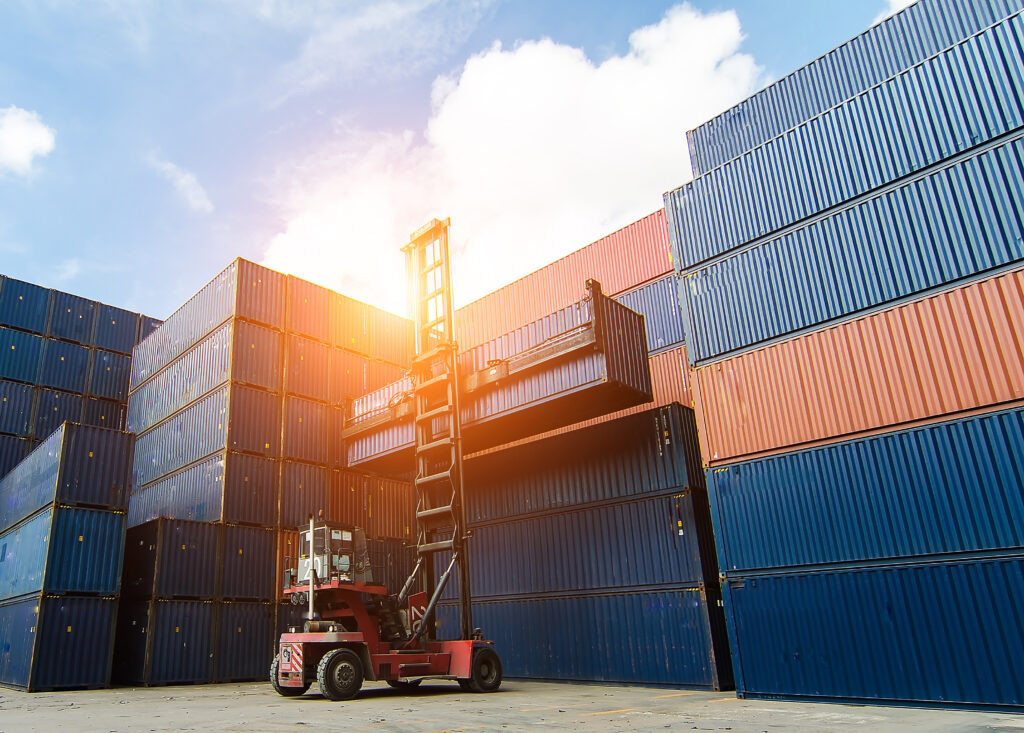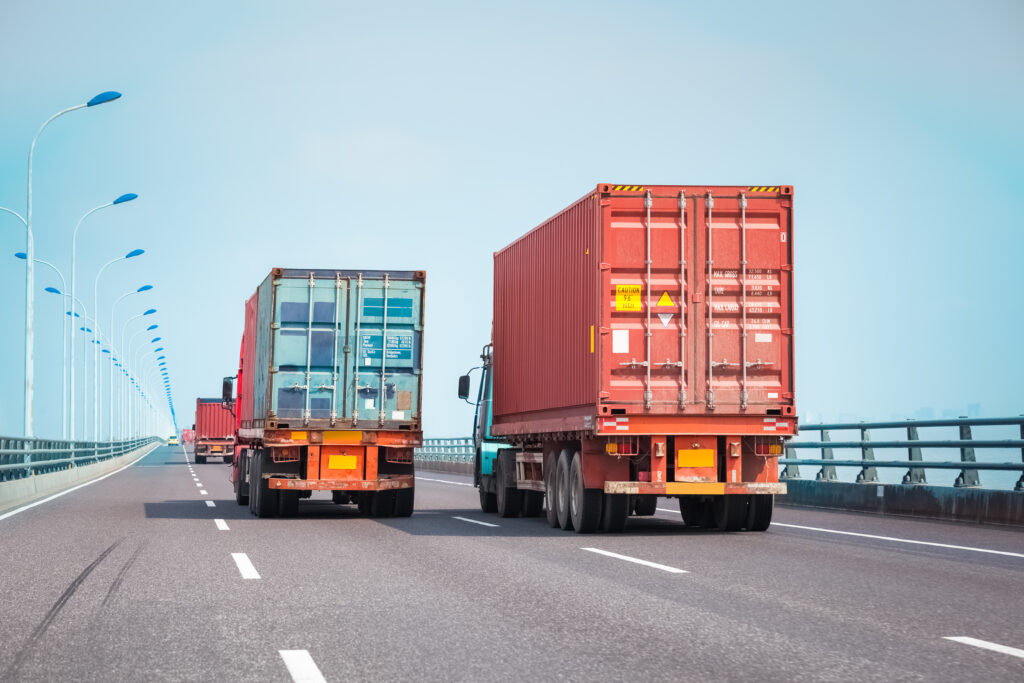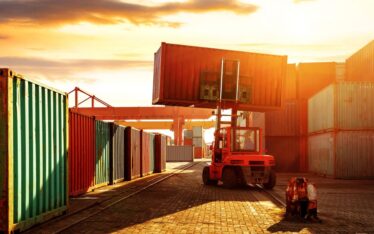Before going into the specifics of intermodal container costs, the following are basic details involved in intermodal shipping.
- Intermodal shipping is where two or more transportation modes are involved in the shipment of freight
- Items are transported either via rail, truck or container ships
- Shippers have the opportunity to maximize each transportation mode’s strength in order to improve shipping efficiency as well as manage risk
- Using intermodal shipping allows one to take advantage of the strengths offered by each of the transportation modes.
- Using the rail promises shippers efficiency during the portion of the long-haul move
- Using trucks allow shippers to complete the initial and final portions of the journey
How to know which mode of intermodal shipping is appropriate for your freight
Intermodal shipping may be appropriate for your freight if you are transporting items for 500 miles or more.
- Intermodal transport services utilize various forms of transport such as trains, ships, trucks, airplanes
- The type of transport used is based on the goods being moved, its necessity, and how cost-effective the transport service will be
- Items which are usually transported via intermodal rail include groceries, household appliances, electronics, retail items, alcoholic beverages, clothing, furniture, toys

The costs involved in intermodal transport
One of the major expenditures when using intermodal transport is the cost of containers.
- Containers are large boxes made of metal. Goods are put inside these containers for shipping.
- Such containers are best for shippers due to their cost-effective quality, size, and the speed of which they are moved.
- Goods are adequately protected and secured inside containers.
- The size of the containers allow a large number of items to be shipped at a single time
- Additional costs are incurred once the shipper hires the services of an intermodal broker.
How to manage intermodal container costs and shipping
Intermodal containers are made of steel boxes that come in varied sizes and shapes. Their structure ensures that materials or goods are delivered to the correct destination safely and securely.
- A standard intermodal container measures 20 feet to 40 feet
- An intermodal container is able to hold thirty tons of cargo
- The cost of an intermodal container cost ranges from $1,000 to $4,000
- The price would depend on a container’s features and size
- Intermodal shipping containers can be leased for 18 to 24 months for approximately $75 to $150 per month
The following factors must be considered when determining the costs of intermodal transport and shipping.
- Know the quality and intermodal container costs to be used in order to make sure your goods are secure and protected
- Do cost comparison of trucking, rail, as well as waterborne shipping companies.
- The most common intermodal transports used are rail and truck
- When transporting items in short distances, intermodal trucking is utilized. This service is usually given at the start and end of the transport.
- When transporting items on average distances, rail is used due to its economic benefit.
- Intermodal shipping that requires long distances uses either maritime transport or air transport.
- Check the services offered by various intermodal transportation services. Compare and contrast their performance by checking their cost-effectivity and the trustworthiness of their operations. Always check an intermodal broker’s service record and reputation
- Pay for the services of an efficient and professional intermodal services container for your goods
- Hire the services of an intermodal broker to manage and monitor your intermodal freight shipments. These brokers are equipped with the knowledge and experience of intermodal shipping as well as the transport of large quantities of freight. Payment for their services is based on how much they charge for their base rate.
- Intermodal brokers track all shipments and keep a record of it on the preferred timetable of their client. They can serve as a beneficial supplement if their service is cost-efficient.
The basics of intermodal transportation pricing
The pricing of intermodal transport basically consists of the linehaul rate and fuel. Intermodal providers determine the pricing by breaking both these down in components.
- Linehaul costs cover dray from the warehouse or manufacturing site onto the intermodal ramp
- Cost of the rail line haul is also included along with interline fees especially for the intermodal container costs to transition from one railroad to another
- The destination of the dray intermodal ramp, if multiple stops are to occur before it reaches the customer is similarly included
- Price of the fuel is based on rates found at the US Energy Information Administration

Additional charges to watch out for
Once an intermodal shipment is mishandled, accessorial charges – or unexpected charges – can occur. These could cause unwarranted delays, lead to frustrations, and even destroy business relationships. Common accessorial charges include the following:
- Detention is when a charge occurs because a container is held more than two hours at the place of origin or destination
- Demurrage is a charge determined by the intermodal ramp anytime the cargo is left more than the free time allotted. The charge increases as the days also increase.
- Per diem is a charge given on a per-day basis and at a fixed rate against a carrier for its use of containers, chassis, trailers
- Re-work is a charge related to intermodal weight. More than 90% of weight issues are connected to load shifting during transit. In order to have the load corrected, it is sent back to a facility in order to be re-worked into a legal weight limit.
Fortunately, there are ways to avoid these charges. Proper management and planning lead to little to no additional charges.
- Be aware of the rules om demurrage and storage. Once you know the rules, make sure you are diligent in getting your freight moved to its destination. If more than one container will be transported, ensure that you contact and coordinate well with your specific dray provider in order to have the oldest container be moved first.
- Ensure that the intermodal shipment is blocked and braced in order for weight shifts to not occur. If you need assistance, your intermodal provider will work with the class I railroad in every step of the way.
The benefits of intermodal shipping
One of the benefits of intermodal shipping is its ability to combine the excellent features of intermodal as well as a truckload. It is for this same reason why intermodal is the less costly 53’ capacity mode compared to truckload. Other advantages of intermodal are the following:
- It is efficient in the long haul transport of a portion of the origin
- Its reliability is more than three times to that of transporting freight on the highway thanks to trains that are able to move a ton of freight for more than 470 miles using a mere gallon of fuel
- A truckload is similarly flexible in transporting freight over the road from one point to another
Conclusion
All in all, intermodal transport via intermodal containers produce significant value for shippers who haul freight for more than 700 miles. Shippers are in a good position to look for their supply chains’ value by using domestic 53’ intermodal. Being aware and knowledgeable of basic intermodal container costs information will help shippers make highly informed decisions. It is best to always be proactive in seeking out relevant information that will assist you in transporting your goods in a problem-free manner.




